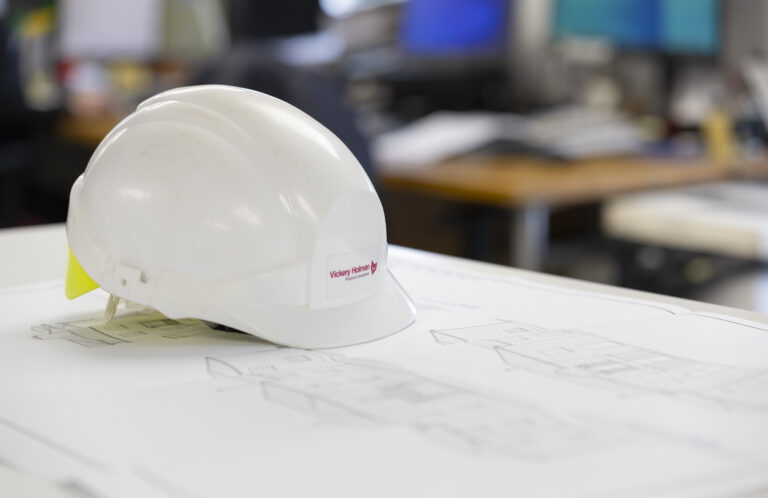Understanding Leases
Vickery Holman helps you throughout the process, from finding your premises throughout the duration of your lease including dilapidations and lease expiry or renewal.
Lifecycle of a Lease
Dilapidations are the state of disrepair of a property that occurs when a tenant fails to meet their legal and financial obligations to a landlord. However, dilapidations should not only be addressed at the end of a lease; tenants and landlords should be aware of their obligations from the very beginning of the lease process.
1. Property Search
Our experienced commercial agency surveyors can advise tenants on what property is best for their needs. This may include advice on location and age of property, single or shared occupancy, lease terms and possible obligations.
2. Pre-purchase Survey
Our building surveyors can undertake a building survey of the property the tenant wishes to lease to understand its condition and any potential maintenance or repair issues that will need addressing. This will give tenants an indication of their obligations throughout the term of the lease.
3. Negotiation and Agreement
This stage involves negotiating the terms of the lease, including rent, duration, and responsibilities. Our lease advisory surveyors can work with the parties to agree lease terms that suit both parties’ needs.
4. Lease Signing
Once terms are agreed upon, the lease is formally signed by both the landlord and the tenant. This legally binds both parties to the terms outlined in the lease. We recommend that a schedule of condition is produced and appended to the lease, to record the condition of the property at lease start; this provides a clear reference point for the yielding-up condition at lease end.
5. Occupation and Management
During the lease term, the tenant occupies the property and adheres to the lease terms, including paying rent and maintaining the property. The landlord may manage external or communal parts of the property and ensures compliance with the lease. We can help manage properties on behalf of landlords to maintain their condition and manage rent collection.
6. Mid-Term Reviews and Break Clauses
Some leases include mid-term rent reviews or break clauses, allowing the parties to review the lease terms or terminate the lease early under specific conditions. This is a good point to review the property and ensure that maintenance is undertaken. Our lease advisory surveyors can advise and act on behalf of the parties to get the best outcome in negotiations.
7. Lease Expiry or Renewal
As the lease term nears its end, the tenant and landlord may negotiate a lease renewal or prepare for the tenant to vacate the property. If renewing, new terms may be negotiated. Our lease advisory surveyors can work with the parties to agree new lease terms.
8. Dilapidations and Exit
Upon lease expiry, the tenant must address any dilapidations (repairs or maintenance required to return the property to its original condition). The property is then handed back to the landlord. Our building surveyors can prepare claims and negotiate dilapidations settlements, advise on tenant repairs and manage landlord works. Our valuation surveyors can provide Section 18 valuations that assist in settlement negotiations.
Dilapidations FAQs
What are 'dilapidations'?
Dilapidations relates to a commercial property that has been let to a tenant and refers to the condition both during and after the period of the tenancy. Lease agreements stipulate the level of repair or maintenance that is required from a tenant during, or on completion, of a tenancy, and the parts of the property that are the responsibility of the tenant. Dilapidations relate to any breaches of the obligations of the tenant, including to repair, redecorate or reinstate elements of the property. Landlords and tenants can disagree on the levels of work required and it is worthwhile getting expert advice from a building surveyor before entering into a lease, as well as during or at the lease end, as costs can be significant for both landlord and tenant.
What dilapidations is a landlord responsible for?
A “full repairing and insuring” lease will require the tenant to be responsible for the whole of a commercial property, while an “internal repairing and insuring” lease will leave the responsibility for the external building fabric (walls, roofs, soft and hard landscaping etc.) with the landlord.
As the end of a tenancy approaches, it is recommended that landlords appoint a RICS accredited building surveyor to carry out a dilapidations survey, and to present the tenant with a Schedule of Dilapidations in advance of the lease ending. The intended use of the property may affect the extent of work that a tenant may be required to undertake. If a financial settlement is to be agreed, the money to be paid by the tenant for repair work might be limited to the loss in value to the property. If the landlord chooses to undertake dilapidations work at the end of the lease, they can reclaim the cost of doing so from the tenant.
Landlords usually want a property ready to go back on the market as fast as possible, so agreeing the work in advance is sensible. There is the possibility, in some leases, for a landlord to undertake work on behalf of the tenant prior to the lease end and recover this money via the lease. Careful assessment of the options available to a Landlord in advance of the lease end is advised.
What is a landlord responsible for in a commercial lease?
In most commercial leases the terms seek to limit the landlord’s day to day responsibilities as much as possible. The onus is placed on the tenant to repair and look after the property and comply with any restrictions that have been agreed. There are exceptions such as multi occupational buildings where the only practical option is for the landlord to take responsibility and recover the cost by a service charge. It all depends on the exact terms of the contract that specialist advice can clarify.
How do I make sure a break clause works properly?
Break clauses have become more common in recent years mainly to give tenant’s flexibility in uncertain and rapidly changing economic times. They can be a useful method to trigger a restructure of the lease. There are dangers as time limits and conditions must be strictly complied with for the break to be valid. There may be a financial penalty to pay. It is important to use specialist advice to know when and how to serve the break notice so your break option can benefit you.
What is a Schedule of Dilapidations?
A Schedule of Dilapidations is a detailed list of items that a landlord claims require repair, decoration or reinstatement in a commercial property. This schedule reflects the tenant’s obligations as outlined in the lease agreement, such as repairing, maintaining, or reinstating specific features of the property.
When is a Schedule of Dilapidations issued?
Typically, a Schedule of Dilapidations is issued towards the end of a lease term, often within the last year or after the tenant has vacated the property. It can also be issued during the lease term, in combination with a repair notice, if significant breaches are identified.
Who prepares the Schedule of Dilapidations?
A Schedule of Dilapidations is generally prepared by a building surveyor or another qualified professional, on behalf of the landlord. The surveyor inspects the property to assess its condition and determine if the tenant has met their obligations under the lease.
What are the types of Schedules of Dilapidations?
There are two main types of Schedules of Dilapidations:
- Interim Schedule: Issued during the lease term to address immediate breaches or maintenance issues.
- Terminal Schedule: Issued near the end of the lease term, to outline what needs to be repaired before the lease expires, or issued after the lease has ended, detailing the work required to restore the property to its original condition.
What should tenants do if they receive a Schedule of Dilapidations?
If you receive a Schedule of Dilapidations, consult with a legal advisor or a chartered surveyor experienced in dilapidations. They can help you understand the claims, negotiate with the landlord, and determine your rights and obligations under the lease.
Can a Schedule of Dilapidations be negotiated?
Yes, a Schedule of Dilapidations can often be negotiated. Disputes can arise over the scope of work required or the cost estimates. Negotiation might lead to a settlement or a compromise on the repairs or financial compensation.
How can tenants avoid dilapidation claims?
To minimise dilapidation claims, tenants should:
- Maintain the property as per the lease agreement.
- Conduct regular inspections to identify and address potential issues early.
- Keep thorough records of maintenance and repairs during the lease term.
- Consider obtaining a Schedule of Condition at lease start to establish the property’s initial condition.
What happens if a tenant ignores a Schedule of Dilapidations?
Ignoring a Schedule of Dilapidations can lead to legal action, additional costs, or further disputes. It is essential to address the claims and negotiate with the landlord or their representatives to avoid further complications.





